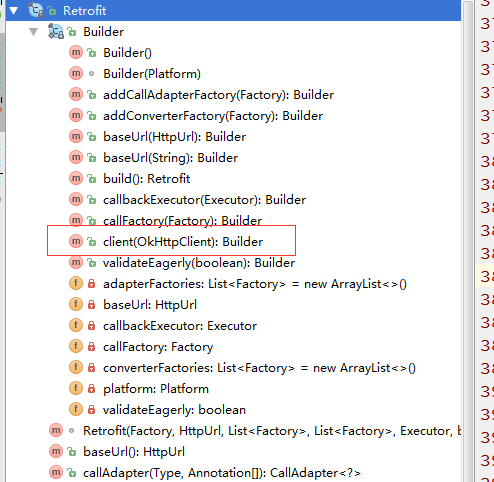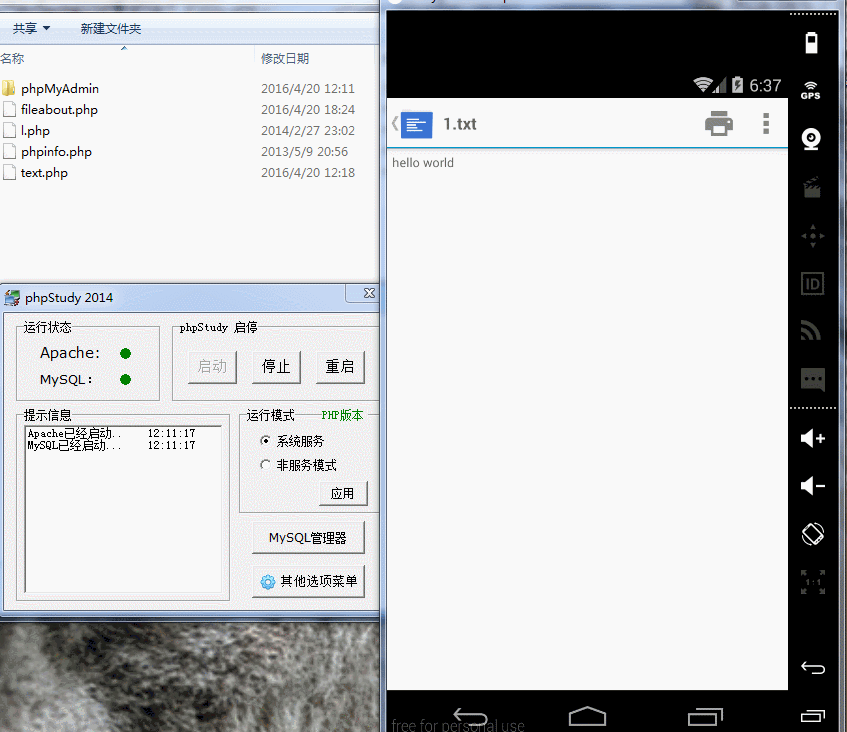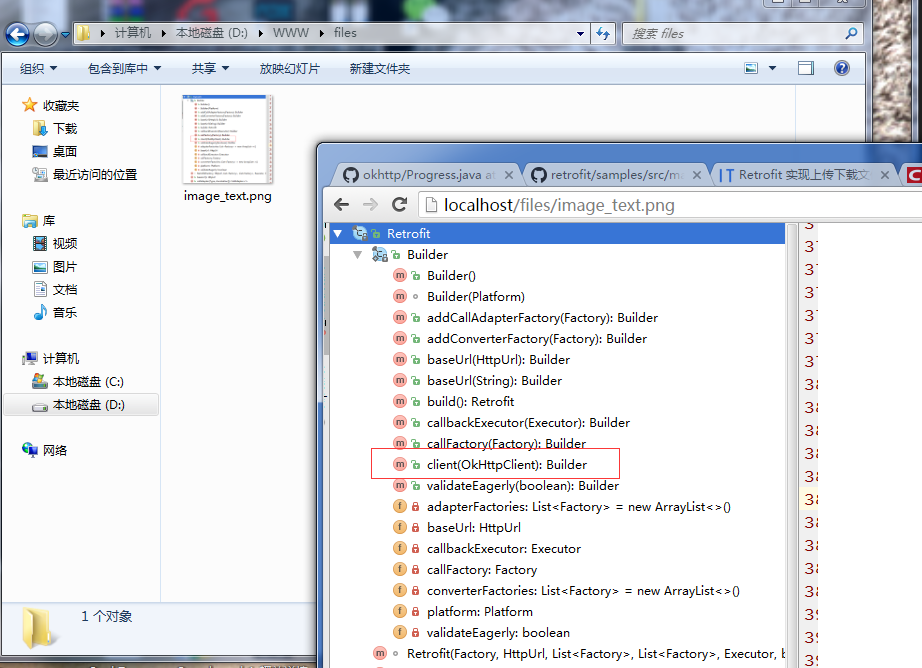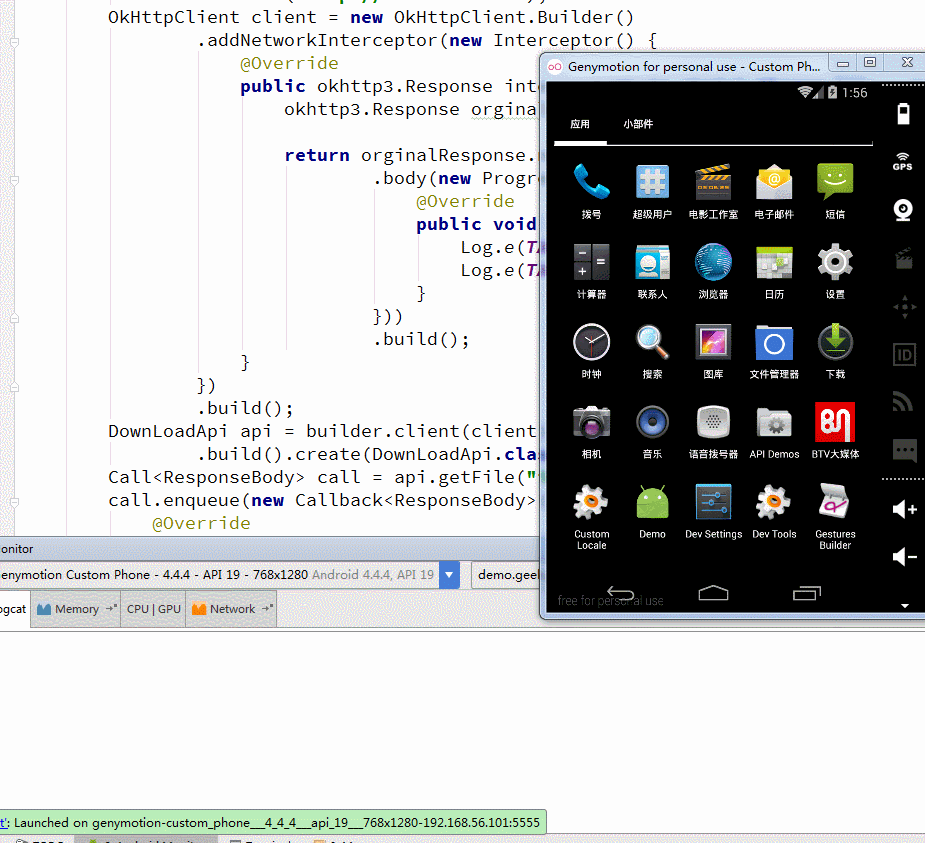Android網路開源庫-Retrofit(二) 檔案上傳、下載及進度監聽
1.寫在前面的話
首先說明,我還沒太搞懂retrofit,目前,這篇部落格只能給出這幾個內容。
- 檔案上傳
- 檔案下載
- 檔案下載的進度監聽
還有這兩點沒弄好,
- 多檔案一次上傳 (批量上傳)
- 檔案上傳進度監聽
當前使用版本
compile 'com.squareup.retrofit2:retrofit:2.0.2'2. 檔案上傳
2.1 api 介面編寫
public interface uploadfileApi {
@Multipart
@POST("/fileabout.php")
Call<String> upload(@Part - @Part(“fileDes”) String des 可以加一些描述資訊(可以不加)
- @Part(“file\”; filename=\”1.txt”) 格式不變,只需將1.text 對應的替換為你想在伺服器生成的檔名稱
- 如果想傳多個檔案,多次請求,當然,也可以像表單一樣(還沒弄好)
當然,上面這種辦法的靈活性差了點,我們可以選擇下面這種寫法
public interface 2.2 上傳檔案
第一種api介面對應的程式碼
Retrofit retrofit= new Retrofit.Builder()
.addConverterFactory(GsonConverterFactory.create())
.baseUrl - baseurl 為你的伺服器地址,(我這裡在區域網)
- file 檔案為你手機中某個存在的檔案
第二中API,我們只需要將相應第一種中的引數用map存起來,不多說了。
2.3 伺服器接受檔案
伺服器接受檔案的程式碼就簡單多了,我這裡以php為例
```
<?php
//var_dump($_POST);
//var_dump($_FILES);
$myfile = fopen("testfile.txt", "w");
fwrite($myfile, $_FILES["file"]["tmp_name"]."\n"
."D:\WWW"."\\".$_FILES["file"]["name"]);
move_uploaded_file($_FILES["file"]["tmp_name"], "D:\WWW"."\\".$_FILES["file"]["name"]);上面這個程式碼就是將檔案的檔名寫入到textfile.txt檔案中,並且將檔案寫在當前d:\www\目錄下,檔名就是上傳的檔名。
結果如下如:
3. 檔案下載及速度監聽
Retrofit並沒有給我們提供檔案下載進度的相關資訊,但是,我們還是可以從一些渠道知道如何監聽下載進度,在OKHTTP的官方demo裡面有一個Progress.java的檔案,從名字上就知道與進度有關。github地址
3.1 改造改造ResponseBody
okhttp3預設的responsebody是不能滿足我們的要求的,(不能知道進度的相關資訊),我們需要作出改造,首先需要個介面,監聽進度資訊。其次,好吧,我承認這是廢話,我們只需要把Progress.java中我們需要的拿出來就好。
3.1.1 interface
public interface ProgressListener {
/**
* @param progress 已經下載或上傳位元組數
* @param total 總位元組數
* @param done 是否完成
*/
void onProgress(long progress, long total, boolean done);
}3.1.2 ProgressResponseBody
public class ProgressResponseBody extends ResponseBody {
private final ResponseBody responseBody;
private final ProgressListener listener;
private BufferedSource bufferedSource;
public ProgressResponseBody(ResponseBody responseBody,ProgressListener listener){
this.responseBody = responseBody;
this.listener = listener;
}
@Override
public MediaType contentType() {
return responseBody.contentType();
}
@Override
public long contentLength() {
return responseBody.contentLength();
}
@Override
public BufferedSource source() {
if (null == bufferedSource){
bufferedSource = Okio.buffer(source(responseBody.source()));
}
return bufferedSource;
}
private Source source(Source source) {
return new ForwardingSource(source) {
long totalBytesRead = 0L;
@Override
public long read(Buffer sink, long byteCount) throws IOException {
long bytesRead = super.read(sink, byteCount);
totalBytesRead += bytesRead != -1 ? bytesRead : 0;
listener.onProgress(totalBytesRead, responseBody.contentLength(), bytesRead == -1);
return bytesRead;
}
};
}
}恩,就是這些東西,別為我okio的相關知識,我也正在學呢。這個檔案就是ophttp3的官方demo裡面的東西。
3.2 使用自己的okhttpclient
我們需要通過OkHttpClient的攔截器去攔截Response,並將我們的ProgressReponseBody設定進去,這樣才能監聽進度。那麼,我們怎麼講client設定進去呢。通過觀察Retrofit的結構發現,Builder下面有client()方法可以設定,好,那麼我們通過Retrofit.Builder來建立(這樣我們可以配置了)。

相關程式碼如下
Retrofit.Builder builder = new Retrofit.Builder()
.baseUrl("http://192.168.56.1");
OkHttpClient client = new OkHttpClient.Builder()
.addNetworkInterceptor(new Interceptor() {
@Override
public okhttp3.Response intercept(Chain chain) throws IOException {
okhttp3.Response orginalResponse = chain.proceed(chain.request());
return orginalResponse.newBuilder()
.body(new ProgressResponseBody(orginalResponse.body(), new ProgressListener() {
@Override
public void onProgress(long progress, long total, boolean done) {
Log.e(TAG, Looper.myLooper()+"");
Log.e(TAG, "onProgress: " + "total ---->" + total + "done ---->" + progress );
}
}))
.build();
}
})
.build();
DownLoadApi api = builder.client(client)
.build().create(DownLoadApi.class);* 注意進度的監聽發生在子執行緒中,要切記*
3.3 將response寫入到檔案裡
寫入的操作就簡單了,程式碼如下,沒什麼好說的。
Call<ResponseBody> call = api.getFile("image_text.png");
call.enqueue(new Callback<ResponseBody>() {
@Override
public void onResponse(Call<ResponseBody> call, Response<ResponseBody> response) {
try {
InputStream is = response.body().byteStream();
File file = new File(Environment.getExternalStorageDirectory(), "text_img.png");
FileOutputStream fos = new FileOutputStream(file);
BufferedInputStream bis = new BufferedInputStream(is);
byte[] buffer = new byte[1024];
int len;
while ((len = bis.read(buffer)) != -1) {
fos.write(buffer, 0, len);
fos.flush();
}
fos.close();
bis.close();
is.close();
} catch (IOException e) {
e.printStackTrace();
}
Log.e(TAG,"success");
}
@Override
public void onFailure(Call<ResponseBody> call, Throwable t) {
}
});* 注意image_text.png是我事先將這張圖片放入到相應路徑下面的,如圖,要確定能訪問到才行 *
3.4 最後結果展示
4. 總結
retrofit的功能強大,靈活性強,但是這就意味著使用起來稍微麻煩一點(至少我是這樣認為的),但是,retrofit依賴於okhttp,okhttp是有demo供我們學習的,so,學習demo去吧,連結地址



